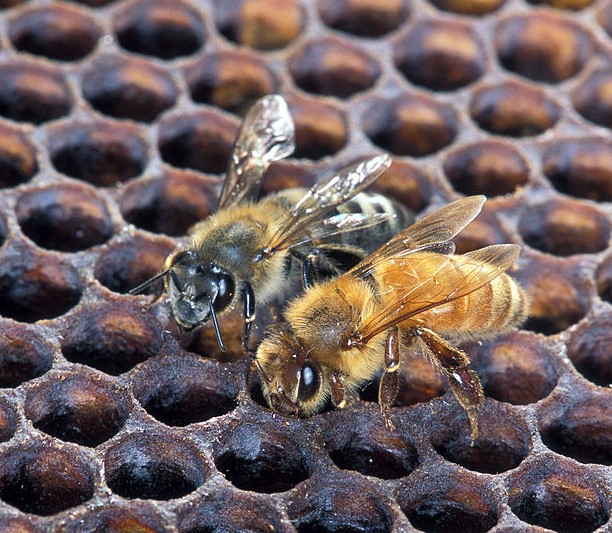Two separate items of news today record the results of Australian research into bees.
One of these tells us bees can learn very quickly which flowers are likely to give them the most nectar, according to Aussie researchers who essentially gave their bees a gambling challenge with five levers which would dispense sweet or bitter drinks.
They found the bees quickly learnt which colours were more likely to give a sugar reward, and used this to guide their foraging tactics.
Scimex reports:
“Our smart stripy friends might use the same proba-bee-lity tactics to figure out which flowers give the best nectar rewards when they’re out foraging, the researchers say.”
An accompanying media release from The Royal Society is headed Honey bees solve a multi-comparison ranking task by probability matching.
Proceedings of the Royal Society B: Biological Sciences
Getting the best return on a slot machine involves learning which levers give the highest chance of a payout. We challenged honey bees in a five-armed bandit task to study how well bees can learn different probabilities. Bees learned remarkably quickly to match their choices to the likelihood at which each of the five options in play offered sugar reward. This ability likely explains how bees are so successful in harvesting nectar from diverse flowers that differ in how much nectar they offer.
The scimex report includes an attachment ( Research ).
The second report deals with bee venom.
RNZ reported this afternoon that researchers in Australia have found bee venom is particularly good at killing aggressive breast cancer cells, including types which currently have limited treatment options.
Professor Pilar Blancafort, oversaw the PhD research by Dr Ciara Duffy, undertaken at the Harry Perkins Institute of Medical research.
The professor talked to Jesse Mulligan about what she discovered.
This news was qujickly flashed around the world and was reportedby The Atlanta Journal-Constitution, which noted that The European honeybee has been the source of honey and venom used for medicinal purposes for thousands of years.
This newspaper report says the new study out of Australia “suggests the venom from honeybees and bumblebees also can fight breast cancer — and win”.
Ciara Duffy, from the Harry Perkins Institute of Medical Research and the University of Western Australia, used the venom from 312 honeybees and bumblebees in Western Australia, Ireland and England to test the effect of the venom on the clinical subtypes of breast cancer, including triple-negative breast cancer, which has limited treatment options.
“Understanding the molecular basis and specificity of bee venom against cancer cells is key for developing and optimizing novel effective therapeutics from a natural product that is widely available and cost-effective to produce in many communities around the world,” Duffy wrote in the study, published in npj Precision Oncology.<
Duffy’s results showed honeybee venom rapidly destroyed triple-negative breast cancer and HER2-enriched breast cancer cells.
The active component of honeybee venom is melittin, which is a positively charged, amphipathic 26-amino-acid peptide. Duffy wrote that both honeybee venom and melittin have demonstrated antitumoral effects in melanoma, glioblastoma (which killed Sen. John McCain), leukemia, and ovarian, cervical and pancreatic cancers.
“We found both honeybee venom and melittin significantly, selectively and rapidly reduced the viability of triple-negative breast cancer and HER2-enriched breast cancer cells,” Duffy wrote. “The venom was extremely potent.”
A specific concentration of honeybee venom can induce 100% cancer cell death, while having little effect on normal cells.
“We found that melittin can completely destroy cancer cell membranes within 60 minutes,” Duffy wrote.
Duffy’s research was part of her Ph.D.,
She said she began with collecting Perth honeybee venom.
“The bees were put to sleep with carbon dioxide and kept on ice before the venom barb was pulled out from the abdomen of the bee and the venom extracted by careful dissection,” she said.
There are 20,000 species of bees, but Duffy wanted to compare the effects of Perth honeybee venom to other honeybee populations in Ireland and England, as well as to the venom of bumblebees.
“I found that the European honeybee in Australia, Ireland and England produced almost identical effects in breast cancer compared to normal cells. However, bumblebee venom was unable to induce cell death even at very high concentrations,” Duffy wrote.
Sources: scimex, RNZ, Atlanta Journal-Constitution












